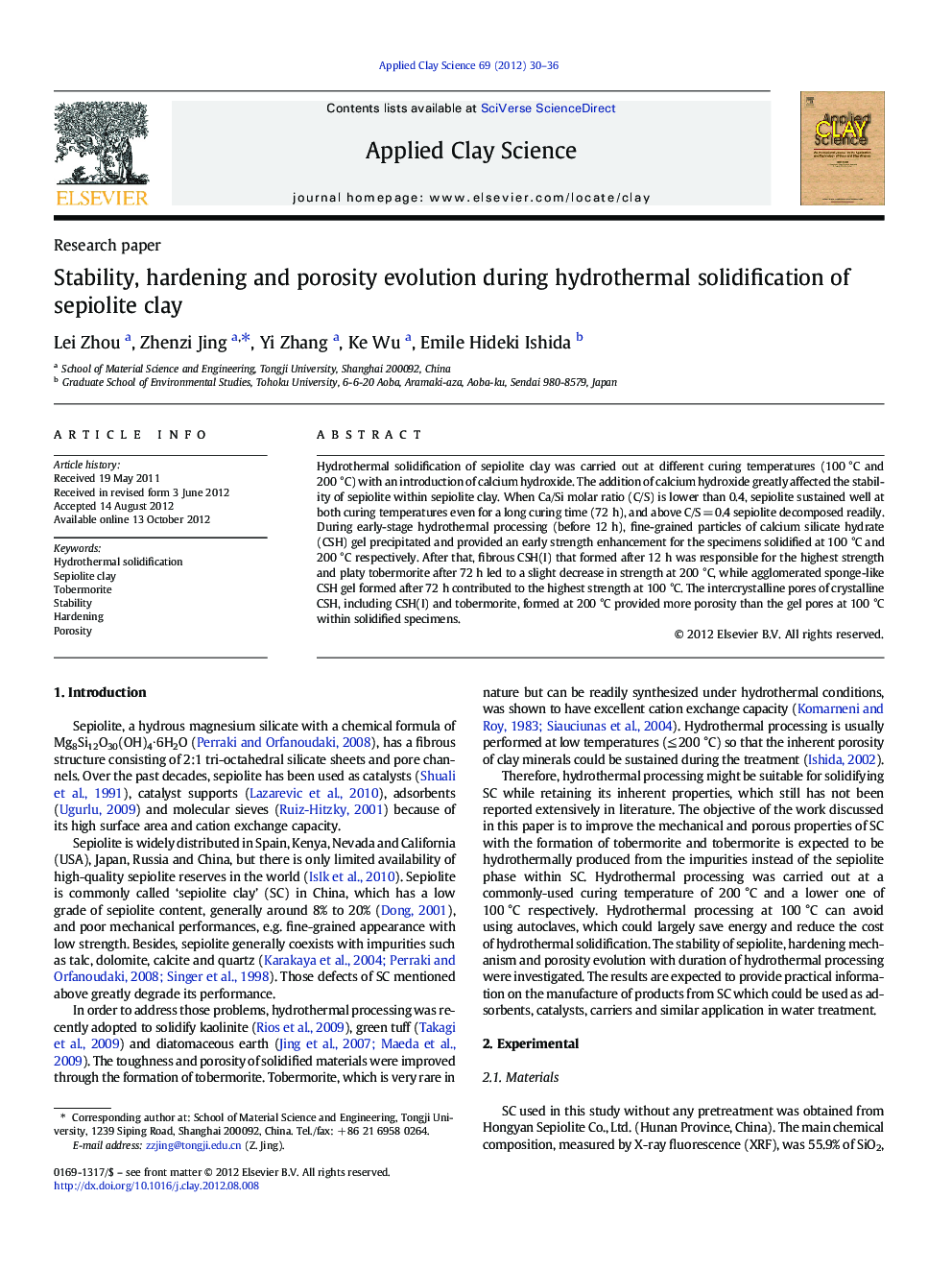| Article ID | Journal | Published Year | Pages | File Type |
|---|---|---|---|---|
| 1695158 | Applied Clay Science | 2012 | 7 Pages |
Hydrothermal solidification of sepiolite clay was carried out at different curing temperatures (100 °C and 200 °C) with an introduction of calcium hydroxide. The addition of calcium hydroxide greatly affected the stability of sepiolite within sepiolite clay. When Ca/Si molar ratio (C/S) is lower than 0.4, sepiolite sustained well at both curing temperatures even for a long curing time (72 h), and above C/S = 0.4 sepiolite decomposed readily. During early-stage hydrothermal processing (before 12 h), fine-grained particles of calcium silicate hydrate (CSH) gel precipitated and provided an early strength enhancement for the specimens solidified at 100 °C and 200 °C respectively. After that, fibrous CSH(I) that formed after 12 h was responsible for the highest strength and platy tobermorite after 72 h led to a slight decrease in strength at 200 °C, while agglomerated sponge-like CSH gel formed after 72 h contributed to the highest strength at 100 °C. The intercrystalline pores of crystalline CSH, including CSH(I) and tobermorite, formed at 200 °C provided more porosity than the gel pores at 100 °C within solidified specimens.
► Sepiolite can be solidified hydrothermally with calcium hydrate addition. ► Sepiolite is stable at low Ca/Si (≤ 0.4) even for a long curing time (72 h). ► Strength development achieved at 200 °C is due to tobermorite formation. ► Strength development achieved at 100 °C is due to CSH gel formation. ► Porosity at 200 °C is better than that at 100 °C due to different morphology formed.
